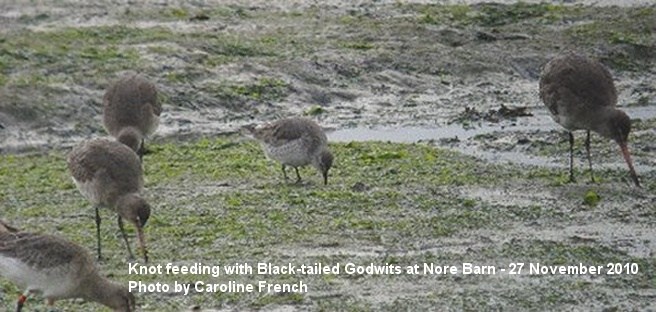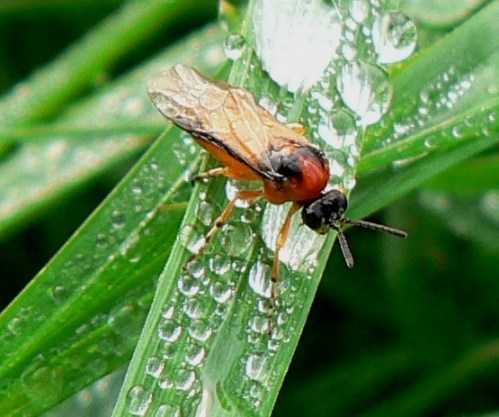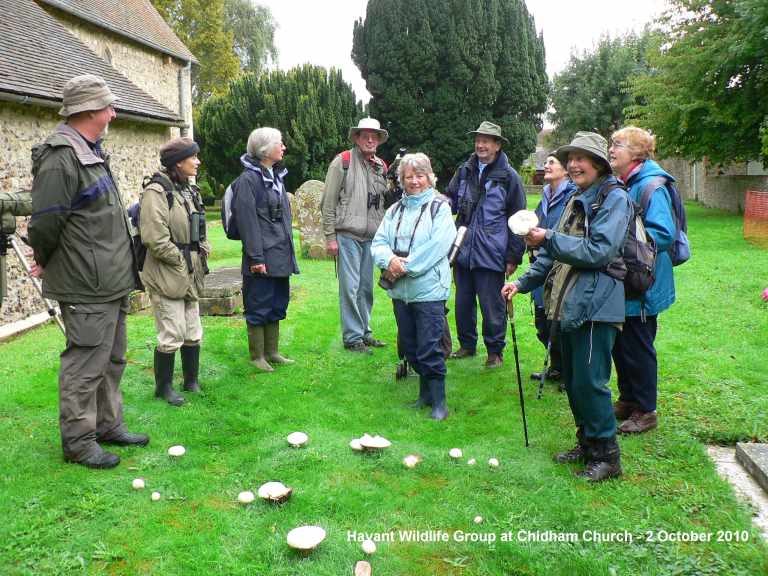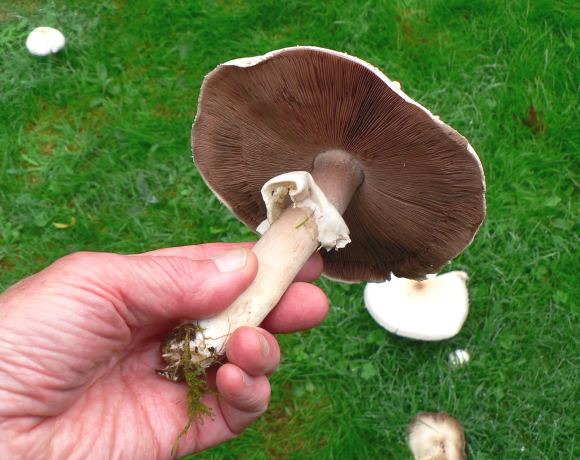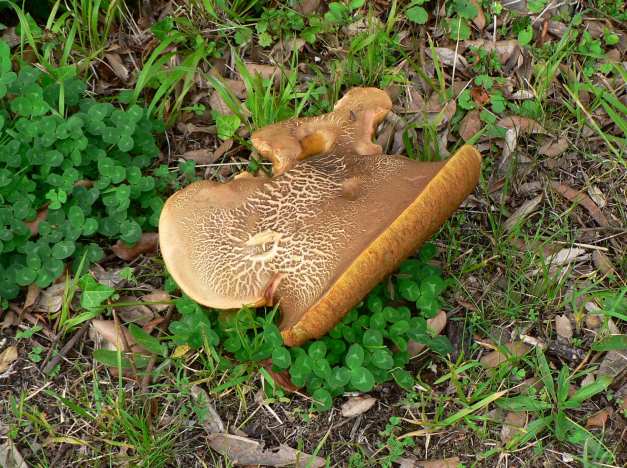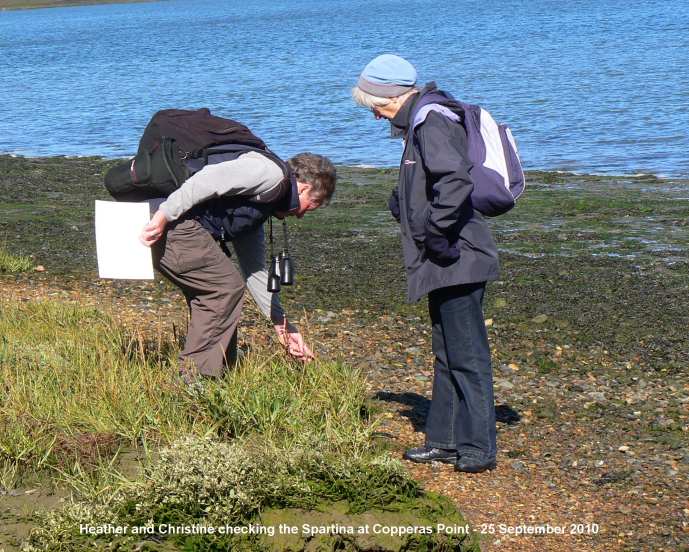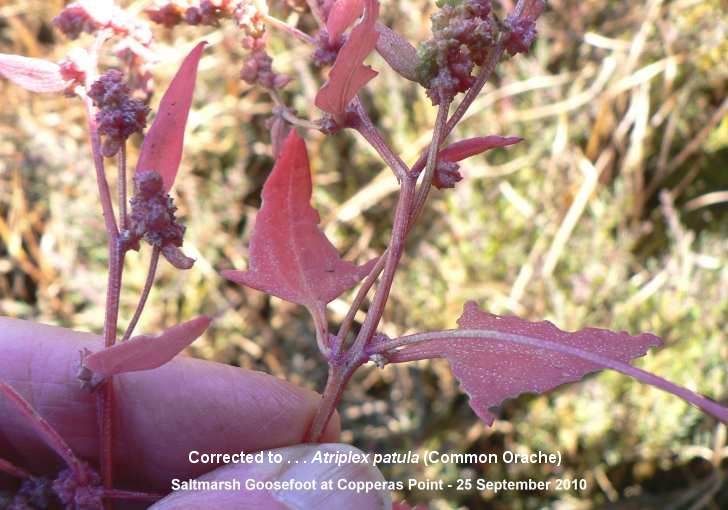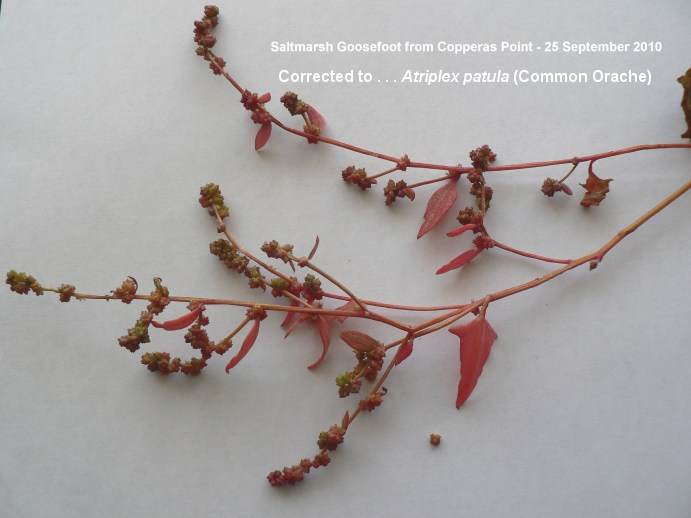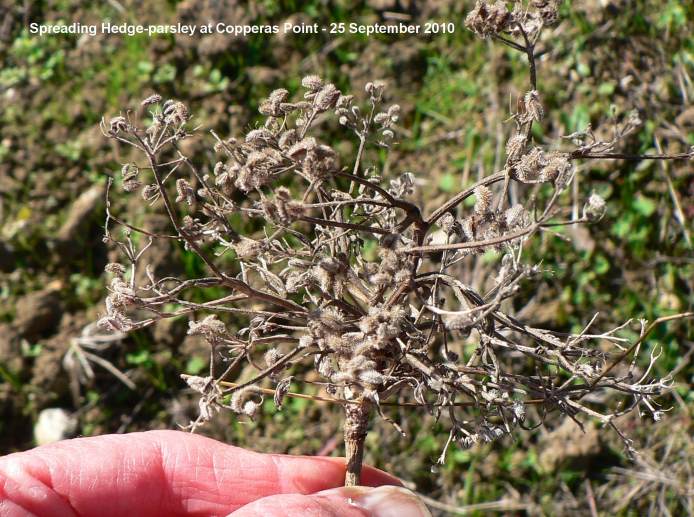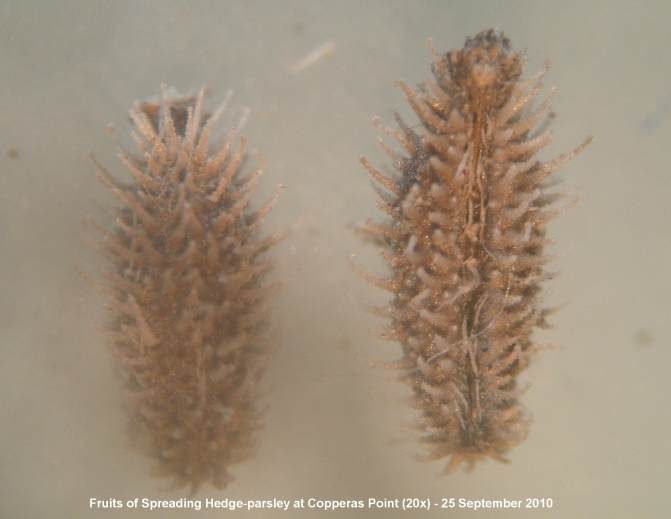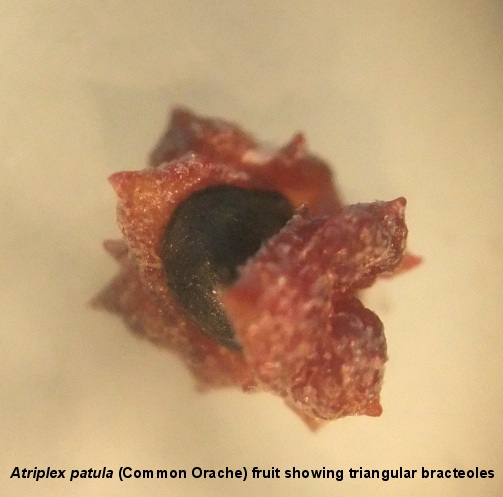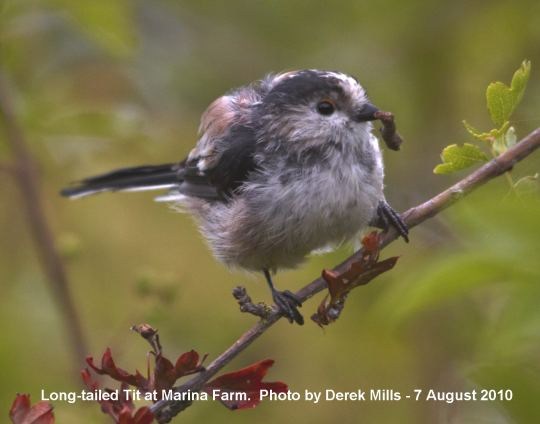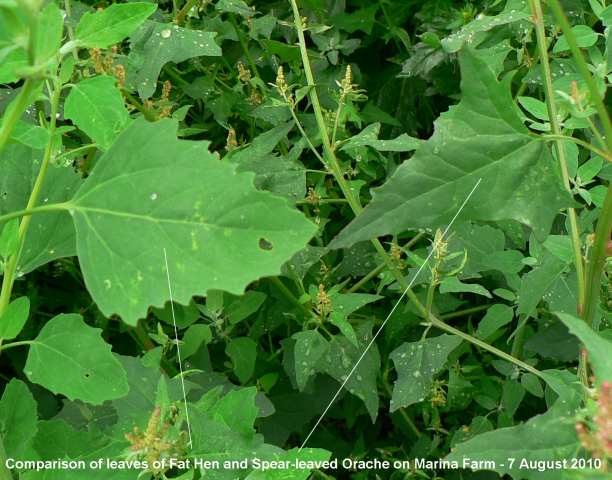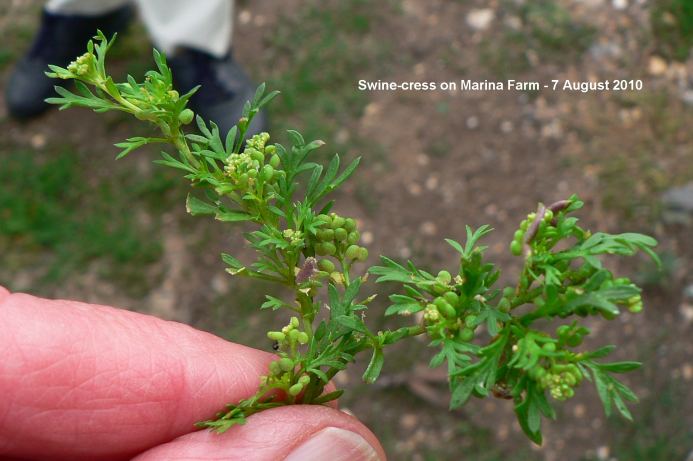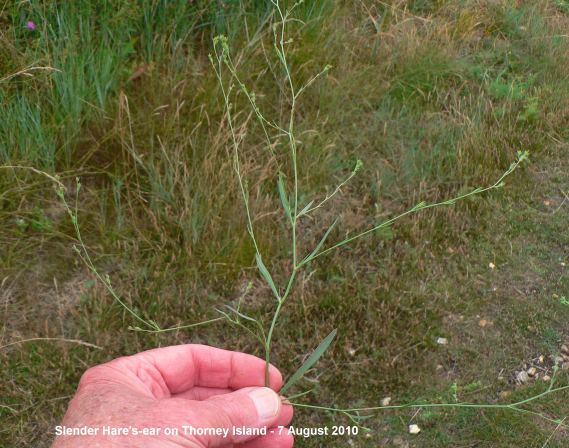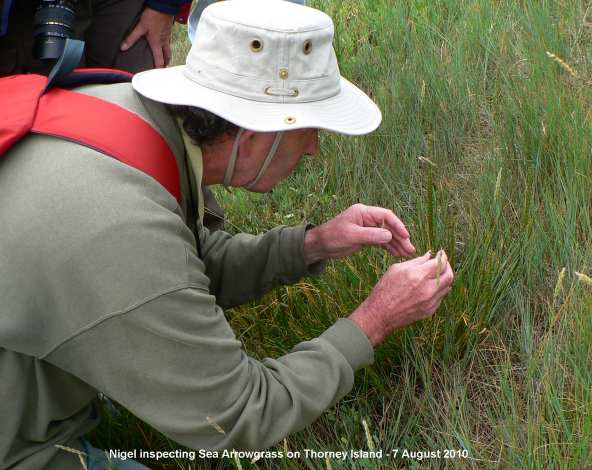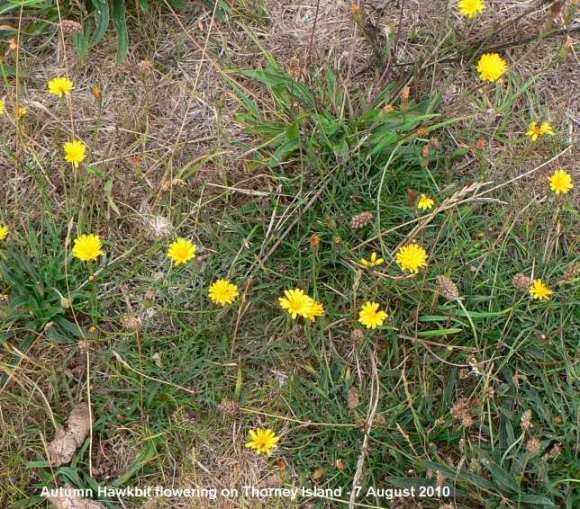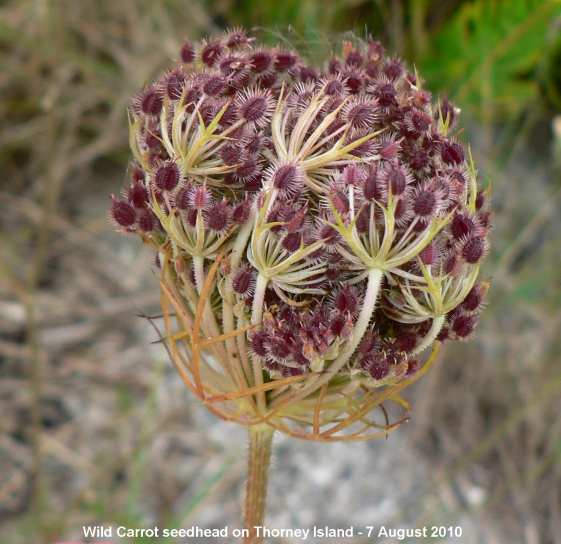RETURN TO . . . Emsworth Wildlife - Homepage. . . Havant Wildlife Group -main page
HAVANT WILDLIFE STUDY GROUPREPORTS OF SATURDAY WALKS 2010
SATURDAY NOVEMBER 26 2010 - EMSWORTH - WARBLINGTONHeather Mills and Caroline French reported on this morning's walk of the Havant Wildlife Group. I should have been leading the walk, but for this irritating chest infection. They followed my suggested route from Nore Barn along Church path to Warblington and back along the shore. It was very cold, but they managed to see quite a few birds. Here is a summary of their observations:
Despite the tide being well out at the start of the walk at Nore Barn, there were plenty of birds feeding fairly close to the shore. Caroline estimated 20-30 Black-tailed Godwits and noted two colour-ringed birds: O//R+RO and ROL+RLR, both seen recently at Nore Barn. Caroline also spotted one Knot feeding with the Godwits. I have seen Knot with Godwits before and suspect they may have come down with them from Iceland.
There were large numbers of Skylarks, Meadow Pipits and Pied Wagtails in the field of stubble on the way to Warblington Church. They stopped for coffee at the church where they heard a Blackbird singing and Song Thrush singing its sub-song. Good numbers of Greenfinches and several Redwings were also in the church grounds, along with two Song Thrushes and at least one Mistle Thrush, all seemingly attracted to the bounty of red berries.
They saw a single Bar-tailed Godwit some way off shore at Warblington. Strange they never come into Emsworth Harbour. They also saw a flotilla of Red Breasted Mergansers in the main channel that goes under Langstone Bridge. Finally, as expected the ever reliable Spotted Redshank was waiting for them in the Nore Barn stream on their return.
Caroline counted 35 bird species in total.
SATURDAY OCTOBER 2 - CHIDHAMTen members of the Havant Wildlife Group assembled at the Cobnor Farm Amenity Car Park for this morning's walk around Chidham village. It was very wet underfoot following heavy rain yesterday. The weather was dull and overcast this morning, but fortunately the rain held off. From the car park we walked along the hedgerow to the seawall then north to the houses. Taking the footpath through to Cot Lane and the church we turned south on the footpath, passing Chidmere Pond. A Frog was seen hopping in the long grass near the car park.
Birds
Walking through the fields to the harbour, we saw a large flock of 70+ Linnets with their typically bouncing flight over the hedgerows. A Wheatear came down onto the ploughed field, but was difficult to see.
Skylarks were numerous over the large fields, and we saw one in full song flight.
Small flocks of birds were seen hunting in the hedgerows, including Blue Tits, Long-tailed Tits, Greenfinch and Chiffchaff. In fact, several Chiffchaffs were seen along the seawall.
A small flock of around Black-tailed Godwits were in the upper Bosham channel where we saw Redshank, Turnstone, Oystercatcher, Curlew, Whimbrel and a Greenshank with Little Grebe in the channel.
Insects
Seen along the path to the harbour: A brightly coloured red and black Harlequin Ladybird. Several ginger flies (probably Sawflies) were on vegetation on the edge of the arable field to the coast.
Nearby, a handsome Crane-fly was resting. From Chinery's book on insects I have tentatively identified it as a female Tipula paludosa from its pointed abdomen and the fact that its wings are shorter than its abdomen. Here is its photo (especially for Chris).
We were interested to see a couple of Araneus quadratus spiders on their webs on the seawall vegetation. They are highly distinctive in having round abdomens with four white spots. We also admired the spider webs on the seawall vegetation, glistening with droplets of moisture.
Tony trying to get an image of the spider with Caroline's camera
My photo of the little beast, hiding its spots
Plants
I circulated a check list of flowering plants found during the recce on Thursday - see the list on the entry for Sep 30. In addition we noted Hedge Mustard, Cow Parsley and Butcher's-broom in flower. I also managed to find some Lax-flowered Sea-lavender in flower on the saltmarshes.
In the car park, we noted the rounded leaves of Burnet Rose (sorry if I referred to it as Briar Rose) and the drooping spikelets of False Brome were also prominent. We noted the difference between Smooth and Prickly Sow-thistle in the manner in which the leaves joined the stem.
Caroline French partially dissected a piece of Glasswort to display what are probably the fruits (seeds).
Poisonous Mushrooms?
I took the group round the back of Chidham Church to see what I thought were 'Field Mushrooms' - I found them during the recce on Thursday Sep 30. I realted how I took some home to my wife, Jean, who fried them up with bacon for our tea yesterday. They actually were delicious, but we were both seriously ill for the rest of the evening and I was violently sick several times. The whole lot came up! Jean was also poorly, but not so sick as me. Fortunately, we both slept well and I felt better to lead the walk this morning.
The group with some of the mushrooms behind the church
I am puzzled by the mushrooms, which certainly look like standard Field Mushrooms, though Jean admitted she was a bit doubtful about them as she was preparing them for the frying pan. She will certainly never eat anything I bring home again! There were about 20 of them growing on the grass behind the church of various sizes, from small domed to large flat caps. The gills were pink through to brown and the solid stems had a ring. I cannot think what else they could have been. Help appreciated.
Here is one of the mushrooms showing the stem and the gills
Other fungi
Jew's Ear was found growing on Elder on the path to the coast.
We looked at the Boletus on the roadside verge opposite the Medlar tree without coming to any conclusion. My tentative suggestion is Boletus impolitus - see photo below for Sep 30.
The Glistening Ink Caps in Chidham churchyard were starting to disintegrate.
I found a nice crop of Field Mushrooms on the grass hidden behind the church. I picked a few but left most for the Saturday walk. Surprisingly, there were none at all on the field south of Chidmere Pond where I usually find them at this time of the year; presumably harvested by others. Also, in the churchyard were a group of what I think were Glistening Ink Caps.
HEDGEROW PLANTS 18Ash Blackthorn Bramble Briar Rose Butcher's-broom Dog Rose Dogwood Elder Field Maple Hawthorn Hazel Holly Horse Chestnut Ivy
Oak Wild Plum Wild Privet Wych Elm
FLOWERING PLANTS 43
Agrimony, Black Horehound, Black Knapweed, Borage, Bramble ,Bristly Ox-tongue, Charlock, Common Mallow, Common Mouse-ear, Common Nettle, Common Ragwort, Common Sea-lavender , Creeping Buttercup, Creeping Thistle, Daisy, Dandelion, Greater Plantain, Groundsel, Hoary Ragwort, Hogweed, Hedge Bindweed, Ivy, Knotgrass, Meadow Buttercup, Nipplewort, Pellitory-of-the-wall , Perennial Sow-thistle, Prickly Sow-thistle, Purple Toadflax , Red Clover , Red Dead-nettle, Ribwort Plantain, Scarlet Pimpernel , Scentless Mayweed , Sea Aster, Shepherd's Purse, Smooth Sow-thistle, Spear Thistle, Water Mint, White Campion, White Dead-nettle, Wild Carrot, Yarrow
GRASSES with SPIKELETS
Cocksfoot, Common Couch, False Brome, Perennial Ryegrass, Sea Couch, Yorkshire Fog, Grey Sedge, Sea Club-rush
SATURDAY SEPTEMBER 25 - CHICHESTER CHANNELTen members of the Havant Wildlife Group braved a very cold northerly wind for this morning's walk from Chichester Marina to Copperas Point on the east side of the Chichester Channel.
Birds
From the main visitor's car park we had a fine view of a Buzzard overhead being buzzed by a pair of Carrion Crows. Just after, what appeared to be a pair of Pintail flew over.
From the car park we made our way down the tarmac driveway of the marina. The Peter Catlett Memorial Hide, which overlooks Apuldram Manor Farm Marsh, provided a welcome break from the wind. On the lake were 4 Teal, 2 Shoveler and 2 Black-tailed Godwits. A Cetti's Warbler sand loudly from the reedbeds.
Scanning from the seawall we found a good variety of waterfowl in the main channel, including 44 Black-tailed Godwits with one colour-ringed bird:
O+GO. This has been a regular in the Fishbourne Bosham channels since 2006. Interestingly, this bird was last seen by Dudley Hird in Kent earlier this month.
Other waders on the mudflats were Greenshank (1), Dunlin (c30), Grey Plover (c20), Whimbrel (2), Curlew, Oystercatcher, Redshank, Turnstone. We also noted one Common Gull (my first of the autumn) and two Great Black-backed Gulls.
Copperas Point saltmarshes
We stopped for a coffee break at the point, sheltering from the wind. The group then went onto the saltmarshes with a list of the 13 plants I had previously found on the saltmarshes. My apologies for the error of substituting Golden Saxifrage for Golden Samphire on the list. A genuine typo.
Heather and Christine examining the Common Cord-grass on the saltmarsh
Most people found most of the plants on the list, with the exception of Sea Arrowgrass, which was very scarce, but Nigel managed to locate it. One extra plant I found that I did not have on the list was Sea Club-rush. But the real excitement was still to come with the discovery of two 'nationally scarce' plants.
List of plants on the saltmarshes: Sea Aster, Golden Samphire, Sea Beet, Sea Plantain, Sea Arrowgrass, Annual Seablite, Glasswort, Stone Parsley, Common Sea-lavender, Lax-flowered Sea-lavender, Common Cord-grass, Sea Couch, Sea Club-rush, Sea Rush.
Nigel taking a GPS reading on the saltmarshes
Saltmarsh Goosefoot ?During our mooch around of the saltmarshes, Nigel came to me with a bright red plant and wondered what it could be. The triangular shaped leaves suggested a goosefoot, but it was not until we consulted F.Rose (new edition) that we realised it could be Saltmarsh Goosefoot (Chenopodium chenopodioides). However, Martin Rand corrected this to Common Orache (Atriplex patula). See diary entry for September 27 for Martin's comments in full.
This image was taken on the saltmarsh
We went back and found a good number of plants mixed in with Sea Purslane and others in a small area of the saltmarsh. All the required features appeared to be present; a small prostrate plant scrambling around in the saltmarsh with red largely untoothed leaves and red stem and long dense clusters of red flowers. Nigel used his GPS to get Grid Ref: SU 8301 0184.
This image was taken at home
Interestingly, a Google search revealed a report of a large colony of Saltmarsh Goosefoot Chenopodium chenopodiodes (sic) by Adastra 2009 'An annual review of wildlife recording in Sussex' published by The Sussex Biodiversity Record Centre. The plants were found at the new RSPB Bracklesham Bay between Bracklesham and Selsey in West Sussex, not all that far from Copperas Point. They say this was the furthest west of any extant population on the British mainland. The only other Sussex location for this species is at the other end of the county, in and around Rye Harbour Nature Reserve.
Spreading Hedge ParsleyThat was not the end of our exciting finds. Walking back along the path behind Copperas Point, I casually looked around for any sign of the Spreading Hedge Parsley (Torilis arvensis) which Ed Rowsell (Chichester Harbour Conservation officer) told me had been found in this area several years ago. I noticed a small dead plant lying on the edge of the path behind the seat. I picked it and, hey presto, the fruits were as described in F.Rose - "oval shaped with straight spines, minutely hooked at the tips".
We looked for others but did not find any. Nigel used his GPS to get Grid Ref: SU 8292 0180. This plant is also marked in Rose as 'nationally scarce' and a BAP species and endangered. Wow! The plant is recorded in the New Sussex Flora for tetrad SU80F, but the record will be sent anyway.
Here is a photo 20x magnified of the fruits of the Spreading Hedge-parsley
Other local reports: Ralph Hollins has reported Spreading Hedge Parsley in Stansted Forest in 2006 and in July this year in a Havant garden! It is
VERDICTS ON THE TWO 'RARE' PLANTS AT COPPERAS POINTI now have received definitive verdicts on the two 'rare' plants found on the saltmarshes at Copperas Point during the Havant Wildlife Group walk on Saturday 25 September: Spreading Hedge Parsley (Torilis arvensis) and Saltmarsh Goosefoot (Chenopodium chenopodioides). We got one right and one wrong. Not bad really.
Spreading Hedge Parsley (Torilis arvensis) - Correct!
Ed Rowsell (the Chichester Harbour Conservation officers replied as follows:
"I can confirm that the plant is most definitely Spreading Hedge Parsley (Torillis arvensis). The corner of the field above the bench is an area especially managed for the plant by the farmer, which essentially involves ploughing the field at the correct time of year and leaving the area to lie fallow. The Conservancy surveys each year to monitor its success and this summer was a record year with 80 plants located flowering in July. It is normally possible to find plants along the edge of the field in the first furrow. But please do not venture further into the field as it both risks trampling this very rare plant and upsetting the relationship with the farmer, who has already been very generous in giving up this part of the field for the sole benefit of this species."
Saltmarsh Goosefoot (Chenopodium chenopodioides) - Wrong!
Martin Rand sent me the following comments:
"Chenopodium chenopodioides usually has leaves more nearly entire than C. rubrum, but as the latter can produce small specimens with pretty well completely untoothed leaves, it's not a character you can rely on. You really need to examine the way the tepals invest the seed in a maturing inflorescence, especially in the flowers to the side of a cluster. Not only are they joined almost to the top (so that the seeds are hidden), but they have a rather 'inflated' look, and come to something of a keel, towards the apex. The SEM photographs in Stace don't give a very good life-impression of this but you will get the general idea from them. The drawing in vol. 2 of Flora Iberica shows it very nicely.
C. chenopodioides is a plant I used to be very familiar with when living in Essex 36 years ago but I haven't seen it since! I'm dredging the murky pits of memory here. It was recorded on Hayling up to about 1900 so another site in Chichester Harbour is not out of the question. It's more ecologically restricted than C. rubrum and will usually be either by runnels or pans on the saltmarsh, or in similar situations 'trapped' behind the sea-wall in coastal grazing marsh. So your habitat is OK.
Having looked at your photos I don't find them very convincing on 'macro' characters. C. chenopodioides is a very fleshy-leaved plant and yours patently aren't. I think you can see this difference between your photos and the pukka ones that follow. Unfortunately you don't show lower leaves, which I would expect to be rather blunt-tipped. The dense bobbly appearance of the inflorescence in C. chenopodioides is also lacking in your plant. But what's really bothering me about yours is that I keep looking at the flowers and thinking I can see signs of two bracteoles around them. Unfortunately the resolution of the photos isn't sufficient to make a judgement; by the time I've blown them up, the detail is lost in noise. So if either the person holding the specimen could check on this, or there is a high-resolution copy of the photo I could see, that would be great. On 'jizz', and on the shape of the basal lobes of the leaves, the plant looks terribly like Atriplex patula (Common Orache) to me at the moment."
Martin was dead right about the bracteoles. Here is an image of the fruit from my microscope at 20x which shows them clearly. QED.
SATURDAY AUGUST 7 - NORTH THORNEYTwelve people attended this morning's walk by the Havant Wildlife Group from the end of Thornham Lane, through the old Marina Farm to the seawall and down the west side of Thorney to the Great Deeps. It was good to see Jim back after his hip operations. The weather was overcast, but warm with no rain. Very nice conditions for a walk.
We all struggled to get over the broken stile into the old Marina Farm, except for Jim who was slim enough to slip through a gap in the fence. I was told yesterday by the owners of the Marina Farm that the stile is soon to be replaced by a gate.
I usually arrange this walk for a low tide, when we can look for waders in the harbour. Unfortunately, I got the tide time wrong and with high tide at 9.30am, the harbour was full of water for the whole duration of the walk. John Gowen brought his scope along just in case, but it was not much used. Despite this I think everyone enjoyed the walk during which we concentrated on the plants, which were there in abundance.
John Gowen passed on news from Michael Prior that Barn Owls had nested in a nest box on the East Park of Stansted Forest and had produced three youngsters. They were ringed by Graham Roberts.
BirdsFrom the car park at the end of Thornham Lane, we saw a Kestrel hovering over the farm and Caroline spotted a couple of Stock Doves flying towards Thorney Island.
We all got a good view of the Swallows flying around the stables, with a number of youngsters waiting to be fed on the overhead cables. There was a nest in the large barn with 4 young chicks still presenting their gapes for food. This must be at least their second brood and I think they have had a good year.
We were entertained by a group of Long-tailed Tits feeding in the bushes along the path to the west of the farm, some of which came very close, allowing good views of their plumage.
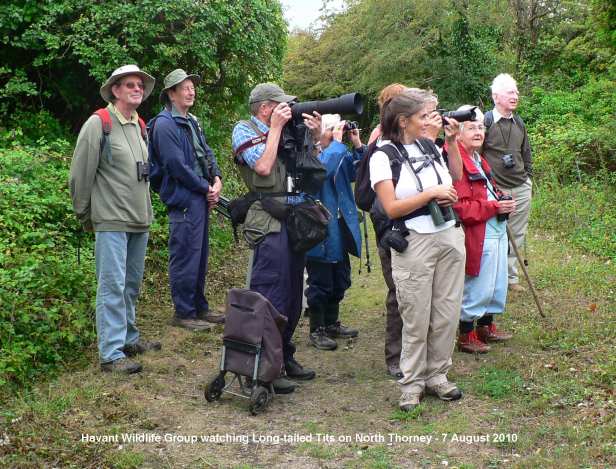
Here is Derek's photo of a Long-tailed Tit
Other birds seen in the marina farm area included House Sparrow, Goldfinch, Greenfinch, Collared Dove, Woodpigeon and Chiffchaff. We also heard a Willow Warbler song from the pond area of the Deckhouses Estate. There was nothing of interest in the harbour, though we did see a group of Curlew in the fields and Meadow Pipits were flitting around the bushes.
InsectsIt was not a great morning for insects, though bees were abundant on the various flower heads.
Common Blues were by far the most common butterflies, a couple of rather tatty ones provided the best photographic opportunity. We also saw Meadow Brown, Gatekeeper, Speckled Wood, Small Copper and, best of all, a Painted Lady (my first of the year) - no photo alas. Heather also found a Silver Y moth.
A pair of Common Blues feeding on Bramble flowers
PlantsThe area around the old Marina Farm was a riot of wild plants, as horses had not been grazed there this year.
We took some time to inspect the mass of goosefoot plants, which are a tricky family to identify. However, based on the shape of the leaves and height of the plants we concluded that most of them were Fat Hen, though we also found some of the distinctive triangular leaves of Spear-leaved Orache and possibly some Common Orache as well. Shaggy Soldier was also well represented in this area.
This photo shows a comparison of the leaves of Fat Hen and Spear-leaved Orache
Here is an Orache plant with bright red dust on its leaves. A form of fungus?
I pointed out the masses of Swine-cress (Coronopus squamatus), that I identified on my recce yesterday, on the ground to the west of the stables on Marina Farm. The flowers in Swine-cress are tightly bunched at the base of the leaves, whereas in Lesser Swine-cress the flowers are in spikes opposite the leaves. I am only familiar with the introduced Lesser Swine-cress, but I shall now need to check out some of these to see if I have missed the native variety.
A close-up of Swine-cress showing the tightly bunched flowers at the base of the leaves
The Wickor Bank on the west side of Thorney was brimming over with flowering plants. We stopped to admire the Slender Hare's-ear, the location of which at the foot of the bank north of the Little Deeps, I had marked with a pile of stones from my recce yesterday.
Slender Hare's-ear is not an easy plant to photograph, but here is my best effort
I also pointed out the tall spikes of Sea Arrowgrass. As they did not match up with the illustration in Blamey, Fitter and Fitter, Nigel got down on his knees to examine them more closely. But we were fairly sure of the identification, particularly in contrast with the Sea Plantain. It was interesting to note that the leaves of Sea Plantain were hairless unlike those of the more abundant, but low growing, Buckshorn Plantain.
It was interesting to note the presence of many saltmarsh plants on the edge of the dry track down the west of Thorney, indicating the influence of the sea on the other side of the tall bank. These included Common Cord-grass, Saltmarsh Rush, Glasswort, Annual Seablite, Sea Purslane and Common Sea-lavender. We also found a nice patch of Lax-flowered Sea-lavender on the edge of the canal north of the Great Deeps.
After much discussion, and studying of our flower guides, Nigel finally cracked the abundant yellow daisies, some tall and branched, but mostly short, as Autumn Hawkbit.
Here are some of the typically low growing Autumn Hawkbits
The other tall and very rough yellow daisy which grew mostly on the bank near the Great Deeps was easier to identify as Hawkweed Oxtongue. We found just one flower of Sea Aster open.
Wild Carrot flower heads varied in colour from pure white to a very pretty deep pink.
Some of the Wild Carrot plants already had deep red seedheads.
SATURDAY MAY 15, 2010- BROOK MEADOWTen members of the Havant Wildlife Group assembled at Bridge Road car park for this morning's walk in Brook Meadow: Heather, Fay, Rowena, Jean, Caroline, Uta, Hilary, Tony, Ian and Brian, who led the walk. We welcomed Rachel who is involved with the Old Bridge Meadow Group at Bosham. The weather was fine and reasonably warm. We started by looking around the Bridge Road Wayside and then made our way to Brook Meadow.
On the way to Brook Meadow, I pointed out the unusual Common Cornsalad growing on the pavement on Bridge Road. We also looked at the first leaves of the rare Narrow-leaved Water-plantain coming up in the Westbrook Stream from the bridge on Victoria Road.
For news about the new Emsworth Waysides project go to . . . http://www.emsworthwaysides.hampshire.org.uk/index.html
All of us in front of the 20 Rowans planted in May 2005 in memory of Gwynne Johnson
The group marching through Brook Meadow
Water VolesSome members of the group had good views of one adult Water Vole and two babies in the area around the Bulrushes north of the observation fence. This is the first report of youngsters this spring.
BirdsWe heard or saw 3 Whitethroats in different parts of the meadow. This is good news as I had only previously recorded one on the meadow this spring.
The 'resident' Cetti's Warbler was blasting out its song from the Lumley Stream area. This bird has now been in the area since April 1 and probably has a mate.
Interestingly, we saw a Moorhen climbing on the branch of a tree overhanging the river. I have seen Moorhens climbing trees before.
